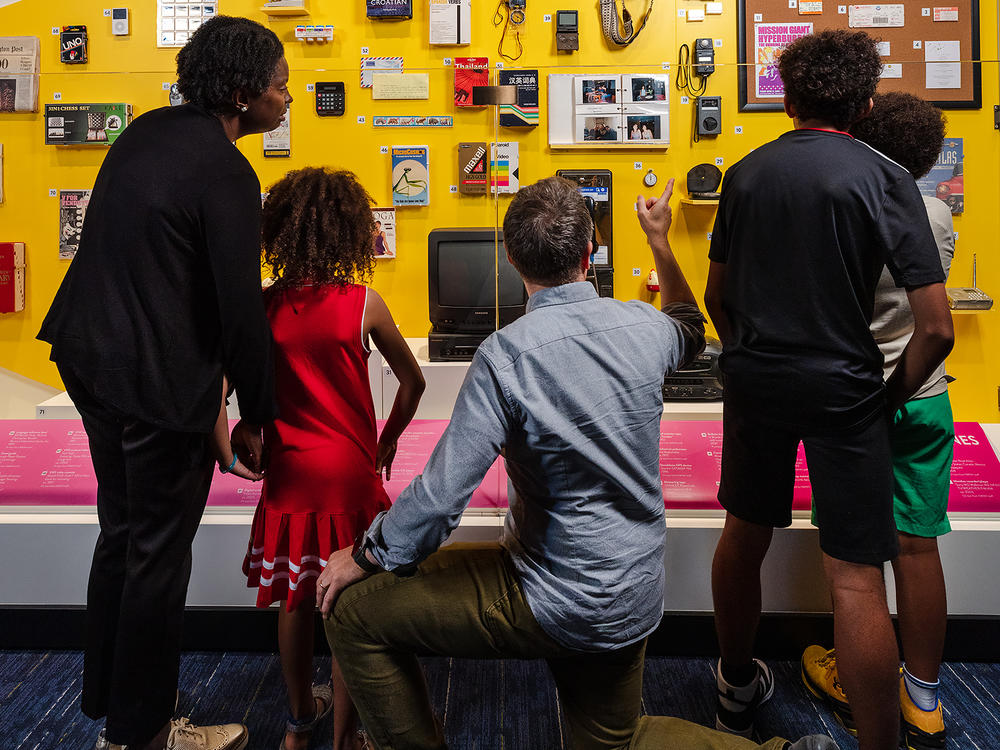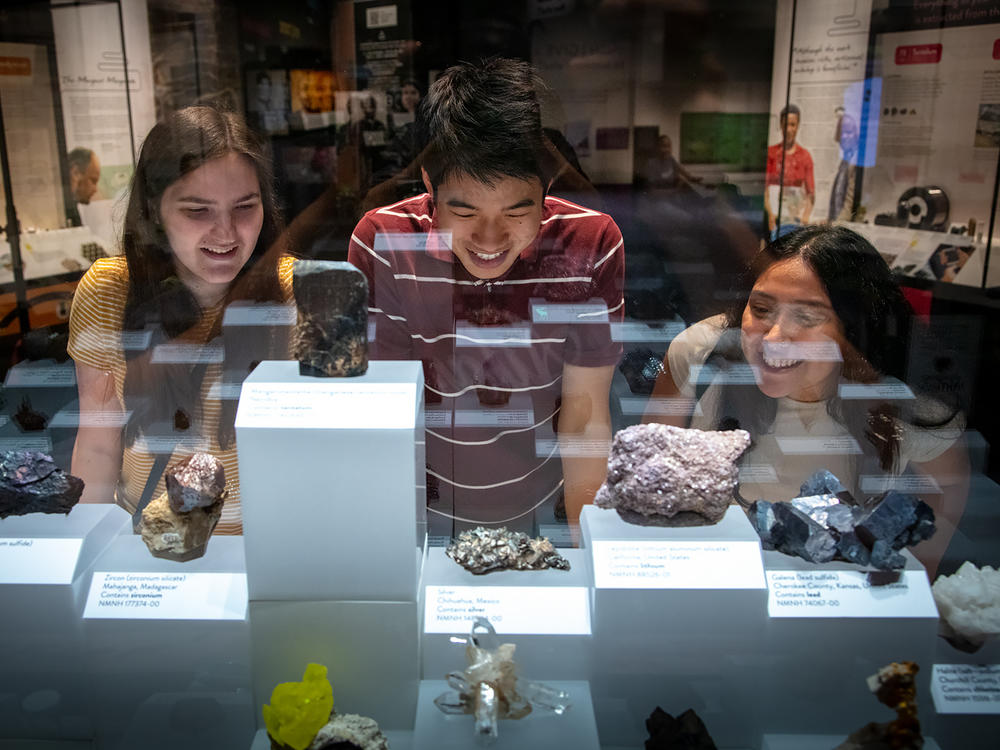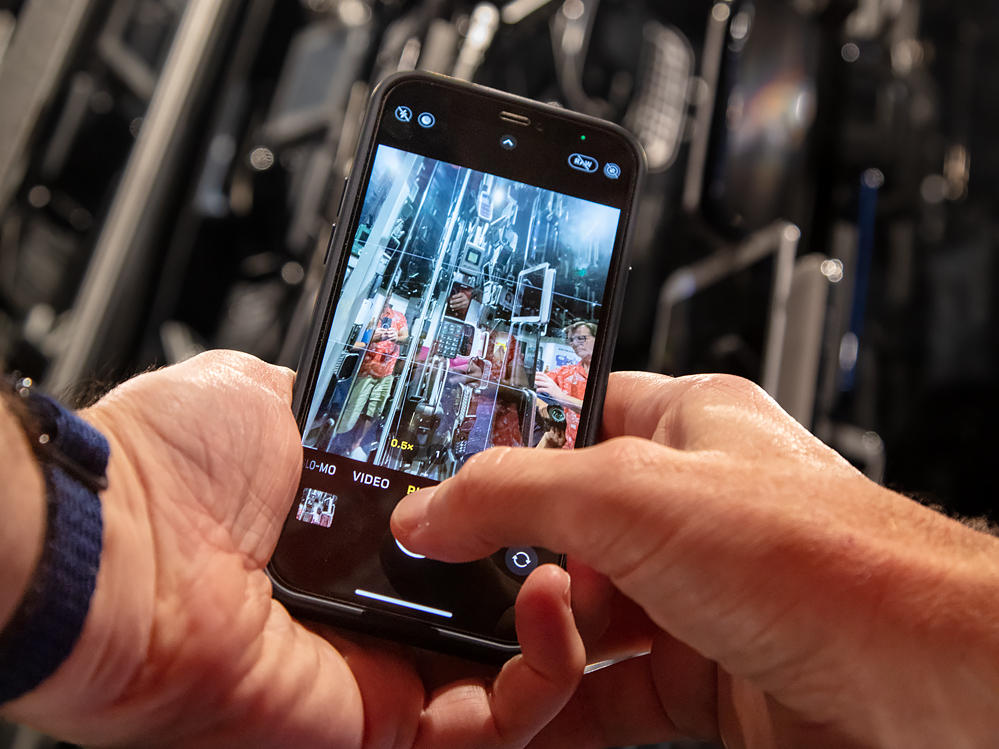Section Branding
Header Content
How DOES your cellphone work? A new exhibition dials into the science
Primary Content
Most of us do not think too much about how our cellphones work. That is, as long as they work.
But a bustling, beeping exhibition that opened in June at the Smithsonian's National Museum of Natural History teaches visitors all about the earth science that helps power our smartphones.
At Cellphone: Unseen Connections, kids dance in front of giant screens that turn them into child-sized emoticons and smash buttons on displays that explain how touchscreens respond. (Largely through a combination of electric charges inside our bodies and a mineral called iridium.)
"I just like electronics. I like mobile devices and PCs. I like learning about them," says 10-year-old Nimay Kallu. He's visiting from Virginia. Kallu was surprised to discover that some of what he thought he knew about cellphones was wrong. "We learned about how wireless networks aren't actually wireless," he says, still slightly taken aback.
"There's all these important wires that make a wireless network work," agrees exhibit writer and editor Laura Donnelly-Smith. Explaining infrastructure, spectrum, transmitters and frequencies to people of all ages seems daunting. But the secret, she says, is to marvel at how someone in Chicago can call someone in Madagascar.
"Light pulses!" she says. "Data travels in light pulses along fiber optic cables. It travels almost at the speed of light."
Immersed in the exhibit, Nimay Kallu immediately understands. "Light can travel seven and a half times around the world in one second!" he announces. "That's why you can't hear delays on your phone calls."
Cellphone: Unseen Connections is grounded, literally, in the earth, says curator and cultural anthropologist Joshua Bell.
"Here we have 55 mineral specimens, out of which are derived from the 65 elements that make your smartphone what they are," Bell says, gesturing towards a glass case filled with copper, potassium, quartz and tungsten.
Some of them may have been wrested from the earth by child laborers.
"We could not not talk about things like conflict minerals," Bell says. Still, the exhibit skates lightly over the violence and suffering that accompanies those extractions. Instead, it introduces visitors to a pair of artisan miners through photographs and stories. The point, Bell says, is to humanize the bottom of the supply chain. It's about bringing people in, not turning them off. It must be noted that Cellphone: Unseen Connections was funded in part by T-Mobile and by Qualcomm, a company that manufactures cellphone parts.
"Until we live in a country that funds science, this is what we have to do," Bell says. Smithsonian oversight, he says, determined that the show's corporate sponsors had little say in the final presentation.
Other metaphorical lightning rods in Cellphone: Unseen Connections? Try a (non-working) 5G tower in the middle of the exhibition. "We wanted to get into the Gs," Bell says. That might demystify the much-hyped technology for visitors wandering from the National Mall, including a reporter clueless about what the "G" in 5G stood for.
"I didn't even know that 'G' stood for 'generation,' I confessed to Laura Donnelly-Smith. "Most of our visitors don't," she responded. "It's important to talk about how this tech evolved."
And, she added, how it's evolving during grave environmental concerns.
"The exhibit explicitly says the most sustainable cellphone is the one you already own," Bell points out as he walks past a gleaming silver spiral made of obsolete cellphones. It's in a section of Cellphone: Unseen Connections dedicated to reusing and repairing. Exhibit writer Laura Donnelly-Smith reads from a wall text: "If everyone in America uses their phone a year longer on average, it would equal the emission reduction of taking 636,000 gasoline-powered cars off the road."
Ten-year-old visitor Nimay Kallu is on top of this already. "I use my dad's old phone," he says. "It's not technically mine."
One day, Kallu will have his own phone. And the way it will work — maybe using 10G or 30G towers? — is difficult to imagine.
Copyright 2023 NPR. To see more, visit https://www.npr.org.



